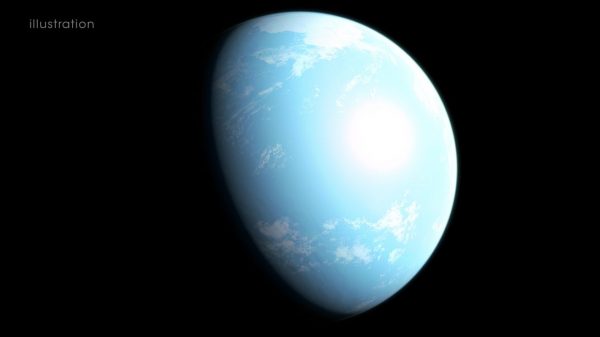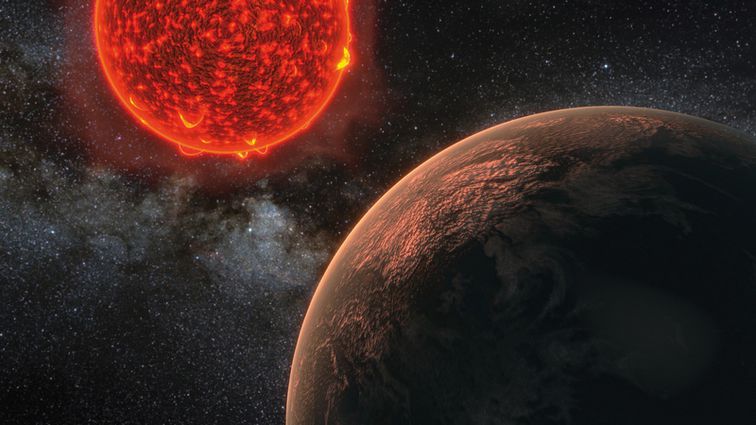Planet hunters just spotted a new super-Earth that could support life – CNET

An illustration of GJ 357 d, a newly-discovered planet that may harbor life.
NASA’s Goddard Space Flight Center/Chris Smith
NASA’s exoplanet-hunting telescope, the Transiting Exoplanet Survey Satellite (TESS), has made a number of monumental discoveries, spotting new worlds at an impressive rate. And with the first TESS science conference taking place at MIT this week, a handful of new discoveries are slowly coming to light, including its discovery of three planets hiding around a nearby star. Around an M-type dwarf known as GJ 357, researchers have spotted a new system of planets.
One in particular could be rather remarkable: A super-Earth, currently dubbed GJ 357 d, may have liquid water on its surface. At only 31 light-years away, in the constellation Hydra, it’s a promising glimpse of another potentially habitable world.
But TESS didn’t actually see this particular planet. Instead, TESS, which snaps images of the sky from space, located GJ 357 b, a “hot Earth” that practically hugs GJ 357. As a result, the surface temperature at GJ 357 b approaches 500 degrees Fahrenheit. That’s not so great for life, as we know it, but it does provide researchers an opportunity to study its atmosphere because it’s the third-closest exoplanet we’ve yet found.
Studying data for GJ 357 b, scientists were able to discover two stars: GJ 357 c and GJ 357 d. The latter is notable because the research team responsible for its discovery note that it is in its star’s Goldilocks zone, where temperatures are just right to allow for liquid water. However, it’s much closer to its star than the Earth is to the sun and orbits once every 55.7 days.
“GJ 357 d is located within the outer edge of its star’s habitable zone, where it receives about the same amount of stellar energy from its star as Mars does from the Sun,” said co-author Diana Kossakowski, an astronomer at the Max Planck Institute for Astronomy, in a NASA press release. “If the planet has a dense atmosphere, which will take future studies to determine, it could trap enough heat to warm the planet and allow liquid water on its surface.”
That’s still a big if, of course, and astronomers will need to take additional measurements to understand the composition of the planet’s atmosphere. If you were hoping for aliens, you’re probably better off heading to Area 51 (please don’t do that).
TESS had its robotic eyes peeled, looking for signs of GJ 357 d for a month, but researchers were not able to spot it using the telescope. Instead, they pored over decades-old data for signatures that confirmed its existence. The research, published in journal Astronomy and Astrophysics on July 9, details their findings and discusses GJ 357 c — a planet in the middle of b and d, that travels around GJ 357 every nine days.
The exoplanet-hunting TESS was launched in April 2018, and its mission was extended through to 2022 in July.

14 Photos







